Who is Juan Flores?
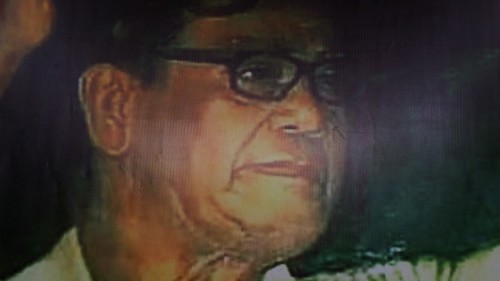
Before this I am honestly clueless.
Maestro Apong Juan Flores: His Life and His Art by Ricky Tana, from the NCCA website.
Juan C. Flores was born on June 24, 1900 in Sta. Ursula, Betis, a sleepy fishing village in Pampanga during the dawn of the American regime in the country.
Betis then, like most of rural Philippines, offered few opportunities in livelihood for its youth aside from the traditional farming and fishing.
"I found fishing a dull, boring occupation, albeit a very respectable was to earn a living," Apung Juan would later reminisce.
Not wanting to be a fisherman or farmer, he decided to embark on an adventure in search of youthful drama. Bitten by wanderlust and against the wishes of his family, he sailed across Manila Bay to the city itself.
In the country's capital, fate brought him to R. Hidalgo Street which has then the Mecca for the nation's avant-garde artists.
The eager probinsyano, after trying his hand at several menial jobs, eventually befriended a local woodcarver who taught him figure making. This chance meeting changed the life of the young man, and consequently made an impact on far-away Betis in Pampanga.
Later, Juan became the apprentice of the famous "santo" carver, Maximo Vicente. It was at this time that his inborn skill in fashioning inanimate objects into works of beauty was realized. He earned the praise of Vicente, and admiration from the locals in the neighborhood.
As his talent for sculpture emerge, his reputation outgrew the small streets of Hidalgo. His fame reached a point where he soon found himself shuttling between the "talleres" of Maximo Vicente and other artist like Garcia and Tampingco.
He was now on his way to being recognized in the field of art, and had he decided to remain in Manila, he might have achieved national prominence much earlier.
He never explained it fully - maybe it was loneliness, or desire to re-establish roots, or a wish to be with family and loved ones, or simply a desire to help his comprovincianos (province mates), but just as he was finally making a name for himself in the country's capital, he decided to go back to his hometown.
Life is full of mystery, puzzling us mere observers with its might-have-beens. Had Apung Juan stayed in Manila, how would his art developed? Definitely, his life would have made an impact on Philippine art in an entirely different way. Without his homecoming, Betis would certainly have been poorer; on the other hand, would his stay in Manila have catapulted him to national fame smoothly and quickly?
Return to Betis
It was in 1922 that he returned to Sta. Ursula, Betis, with the primary mission of teaching his province mates his acquired skills. It also felt it was time for him to start his own "taller". He decided to hire local artisans and taught them the finer points of woodcarving and sculpture. His "kababayans" gave him a warm welcome, befitting a local boy who return from Manila with some degree of success.
For decades, he labored as a teacher to generations of young carver in Betis. Later, as his generosity and skill spread by word of mouth, he likewise become a mentor to aspiring artist from Pampanga and other provinces in Luzon.
It was said then that it was Apung Juan's "stick-to-it-iveness which impressed the people of Betis in particular and the citizens of Pampanga in general. Every trainee who passed Apung Juan's exacting standards was given assistance in putting up his own shop and in promoting his products. This way, Juan had helped hundreds of struggling artisans."
Among his more prominent students were Antonio Galleron, who would later become a well-respected craftsman based in Tondo; the National Artist Vicente Manansala, who made his mark not as a sculptor but as a painter; Antonio Dumlao; Berbabe Flores; Ronnie Cruz; Leopoldo Lugine: Alfredo Santos; and Allan Cosio, who remembers that "His apprentices came from as far as Zamboanga."
Betis Renaissance
It was because of Apung Juan's efforts that the sleepy fishing town turned into a lucrative center for woodcarving.Betis today is the furniture-making and woodcarving capital of Pampanga, and in fact, of the whole Luzon. A stroll through the town - especially before the Mt. Pinatubo eruptions - would reveal the extent of Apung Juan's legacy. Furniture, carvings, and religious images often spill out into the backyards from homes that double as small woodworking shops. One sees sculptors and carvers busy at work all over the town throughout the day.
The best furniture shops in Metro Manila, San Fernando, Olongapo, Baguio, and other urban centers are owned by families from Betis. With the introduction of the crafts of woodcarving and furniture-making , many Betis families have achieved affluence. Apung Jaun, instrumental in this wonderful change, had single-handedly created a tradition previously unknown to his hometown.
And while performing the difficult task of training and undertaking technology transfer, Apung Juan did not receive any salary or remuneration for his effort, time and expertise. He had never shown selfishness in any form. It was he, in fact, who encouraged the more adventurous Betis families to move on to more lucrative locales such as Olongapo, Angeles, Lucena and Metro Manila.
International Recognition
Recognition came slowly to Apung Juan. Throughout the years, the unassuming and shy Maestro had received numerous distinctions, plaques and awards.
In 1971, he was chosen by the Philippine government as the country's representative in a three-day competition held among in Washington, D.C. He was chosen from among all the sculptors in the archipelago. The contest was to create a bust of the United States President Richard Nixon. He won the first prize, besting competitors from all over the world, and amazing the judges and critics with a truly life-like bust of Nixon.
The critics attribute his victory to two factors. First, there was his almost perfect rendering of Nixon's nose. The second factor was that he was the only one who worked in wood, a difficult material for a sculptor to work with.
Milestones
In 1977, the Grand Old Man attained the Panday Pira Award at the age of 77. Weary and in the twilight of his life, he was finally given the recognition that should have been accorded to him decades earlier.
In 1979, years after hard work had taken its toll, the old craftsman was crippled by a stroke. It hampered his creative work, and was a sad loss to Philippine art, as the paralyzed Apo could no longer create his masterpieces.
In 1982, another milestone in his life was reached. It brought special joy to the old man for he was accorded an award by the people he had love and serve so well all his life. He was chosen as one of the "Most Distinguished Sons of Pampanga", and was honored in a ceremony graced by officials.
Journey's End
The last year of Apung Juan's Life were spent mostly in a chair or bed. He had grown physically unable to continue his work as a sculptor. Yes he expressed happiness and contentment as he saw his numerous protégés make name for themselves, and the families of Betis improve their economic standards.
Apung Juan's long, but colorful and productive journey ended on September 14, 1992. He was buried in his beloved Betis.
The SM Tribute
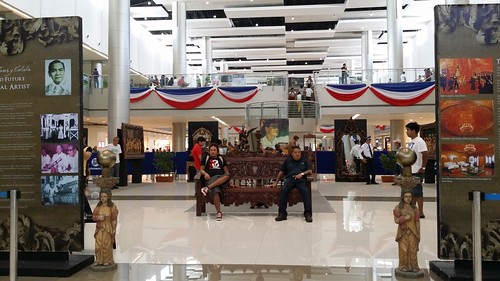

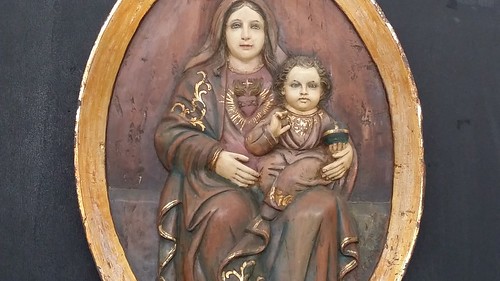
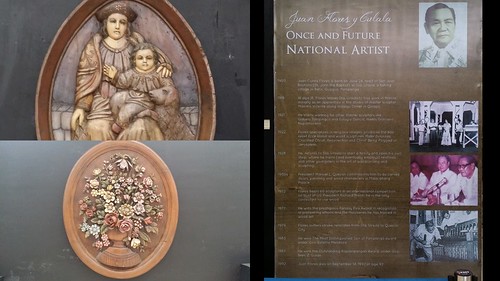

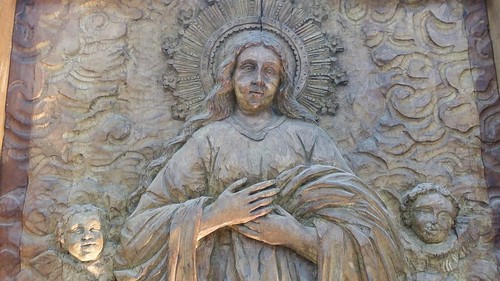
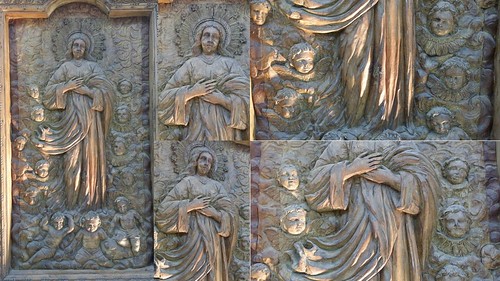
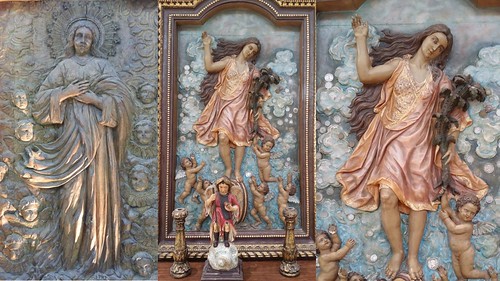
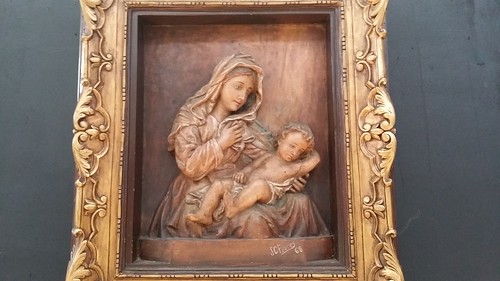
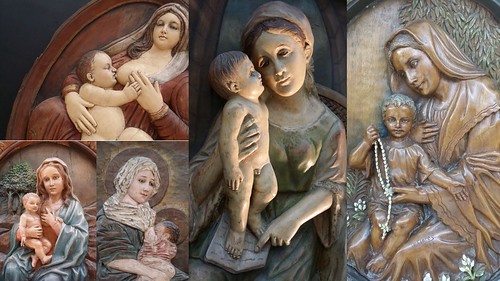
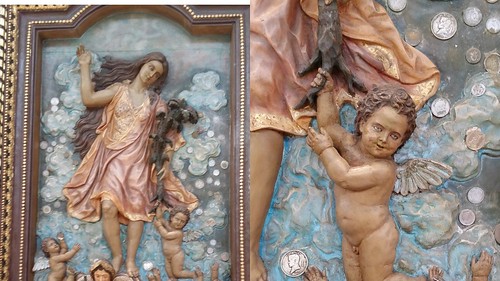

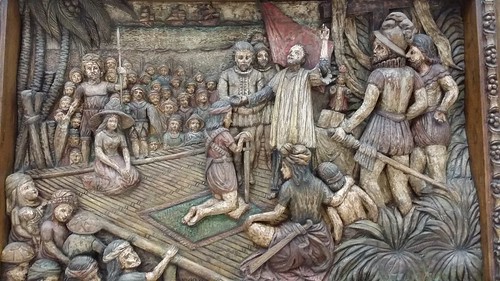

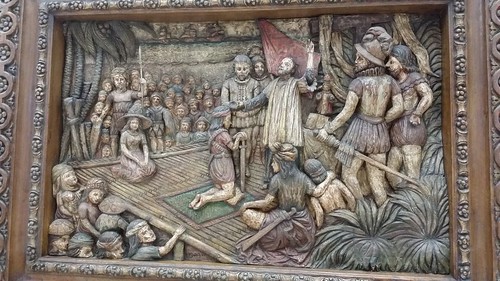
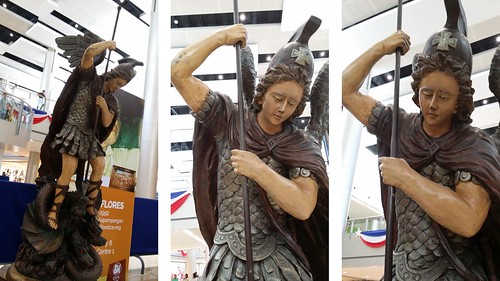
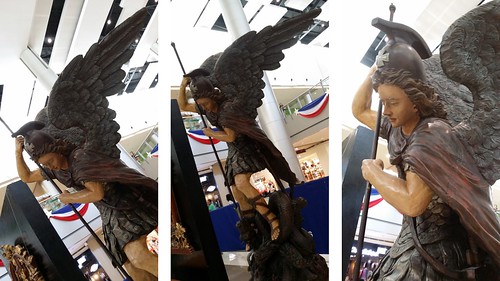
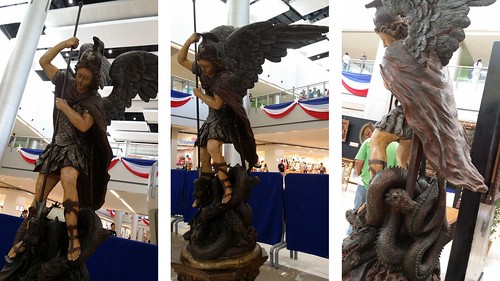
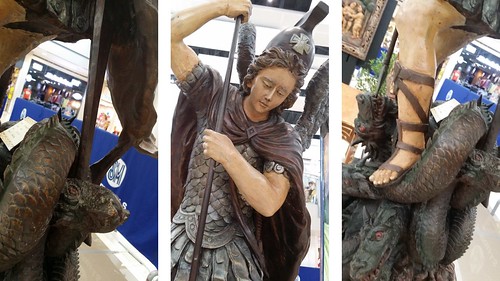
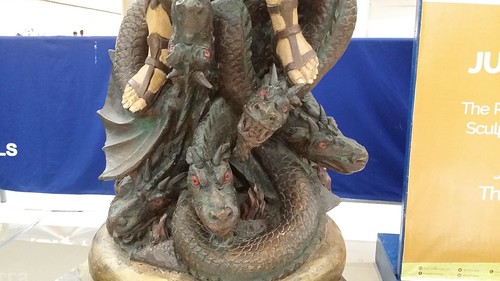
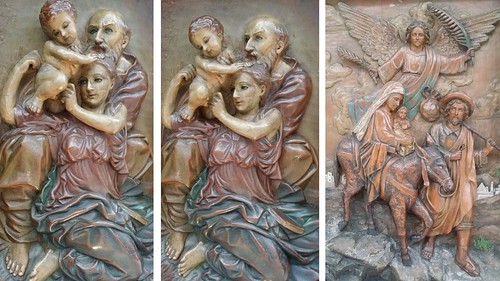


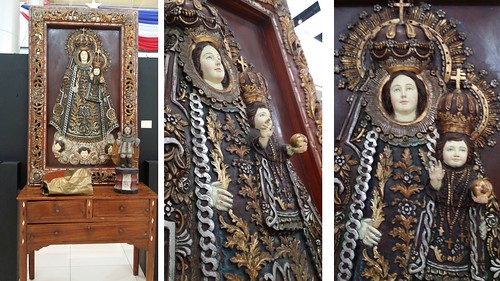
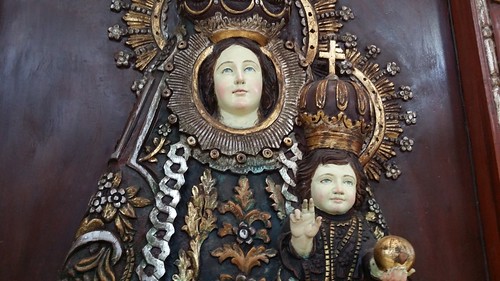
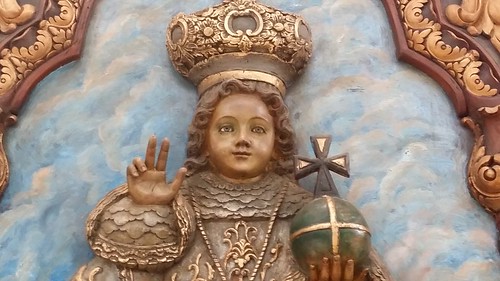

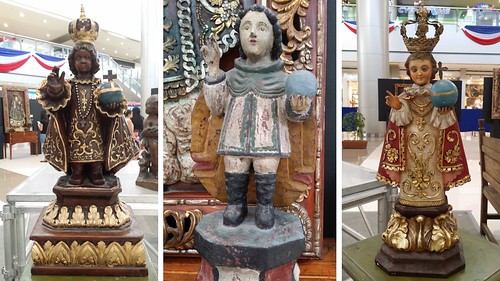
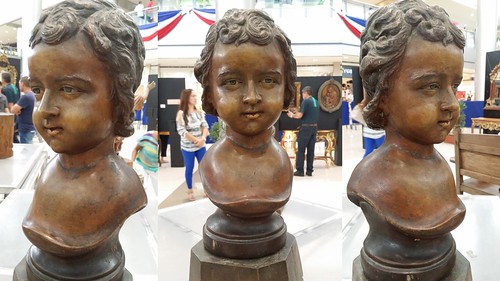
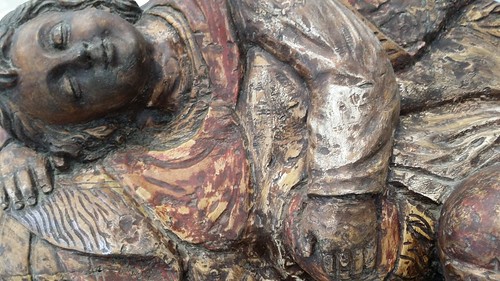
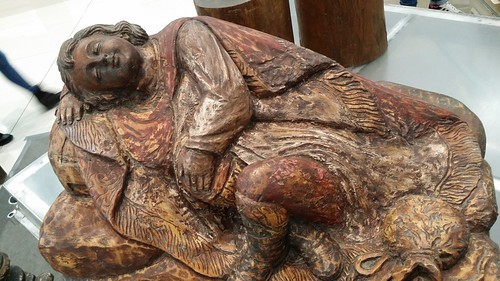
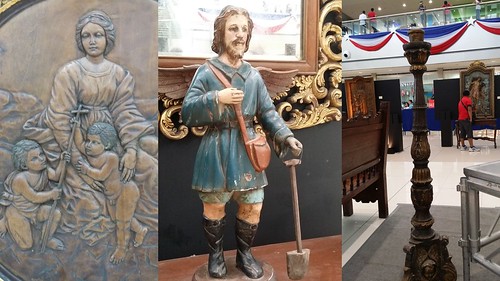
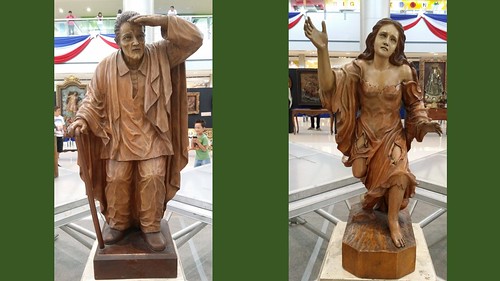

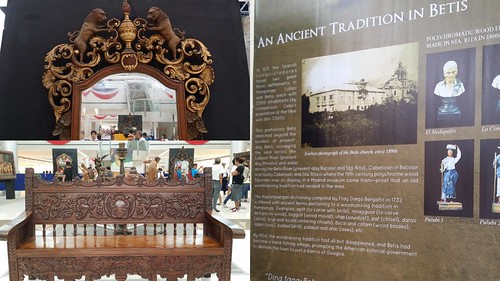
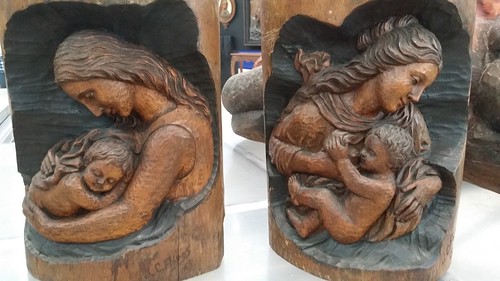

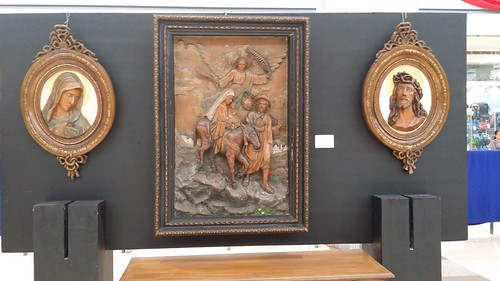
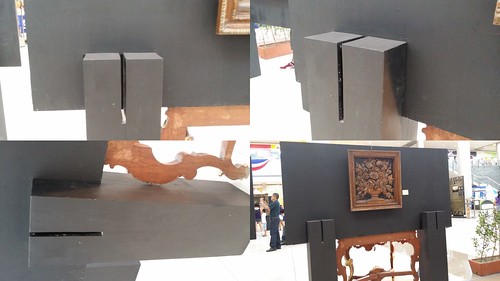
The plus side in mounting this exhibit is for people like me to get to know Juan Flores as a National Artist. The sad part is, the items are all for sale. The works of a National Artist should be kept in a museum for public consumption and not for private use.

No comments:
Post a Comment